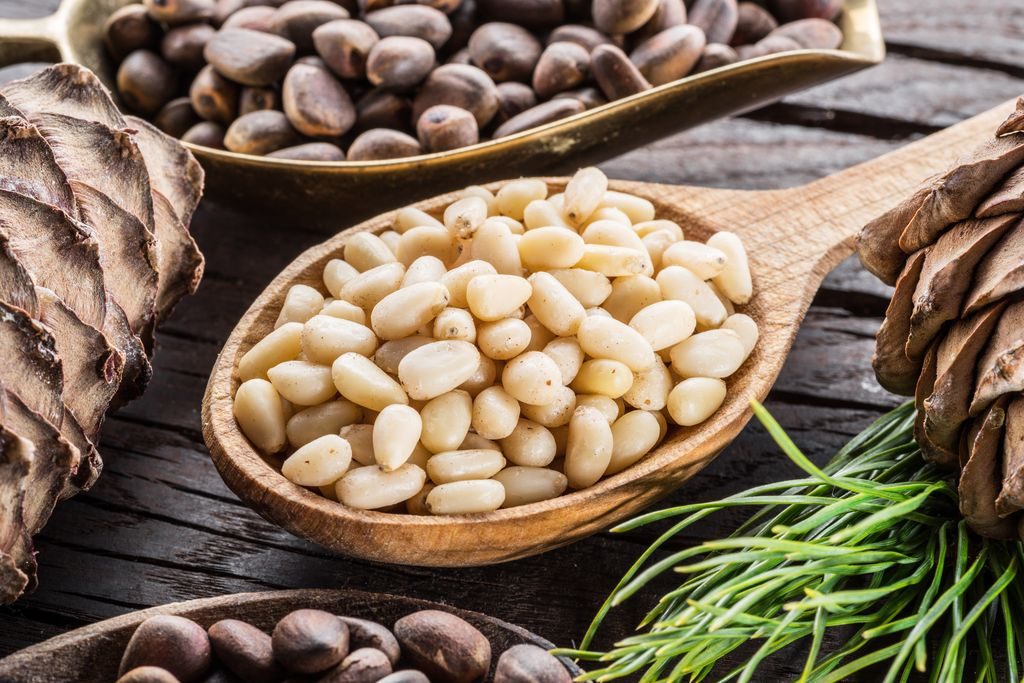Pine nuts
pine nuts are an extremely healthy nut great for topping salads, pasta dishes and of course for making pesto!

Pine nuts (or pine kernels) are tree nuts harvested from a certain kind of a pine tree! There are difficult to harvest which contributes to a high price tag in the shops!
They can be eaten both raw and cooked. Raw pine nuts have a soft texture and sweet taste. A common way to cook pine nuts is either toasting them in a pan or roasting them in the oven. Cooking pine nuts brings out more of a sweeter nutty flavour and makes them crunchy.
Most people associate them with the Italian staple pesto but they can be used to top pasta, salads, soups, vegetable dishes and meat dishes. They are also great in sauces.
Pinenuts can be used to make oil. It has a very low smoking point making it unsuitable for cooking at high temperatures. It’s great for dressing salads or for dipping bread in.
They can also be used to make pine nut butter (think peanut butter but much more expensive). The taste is rich and pretty scrumptious, you only need a little bit to go a long way!
Pine nuts nutritional information
Pine nuts are packed full of beneficial vitamins, minerals and antioxidants that can benefit your health.
Pine nuts are packed full of vitamin K1 and they are a rare dietary source of vitamin E.
Vitamin E acts as an antioxidant fighting free radical reactions in the body.
Pine nuts are an excellent source of manganese, copper, magnesium and phosphorus. They are also a high source of protein.
They have about 673 calories per 100g
It is possible to experience an allergic reaction to pine nuts. Common physical symptoms of an allergy are itchiness, hives, swelling, eczema, sneezing, asthma, abdominal pain, drop in blood pressure and diarrhoea. In some extreme cases, heart attack or anaphylaxis. If you think you may have an allergy to peanuts it’s important to see your doctor.
Recipe suggestions: Pesto




